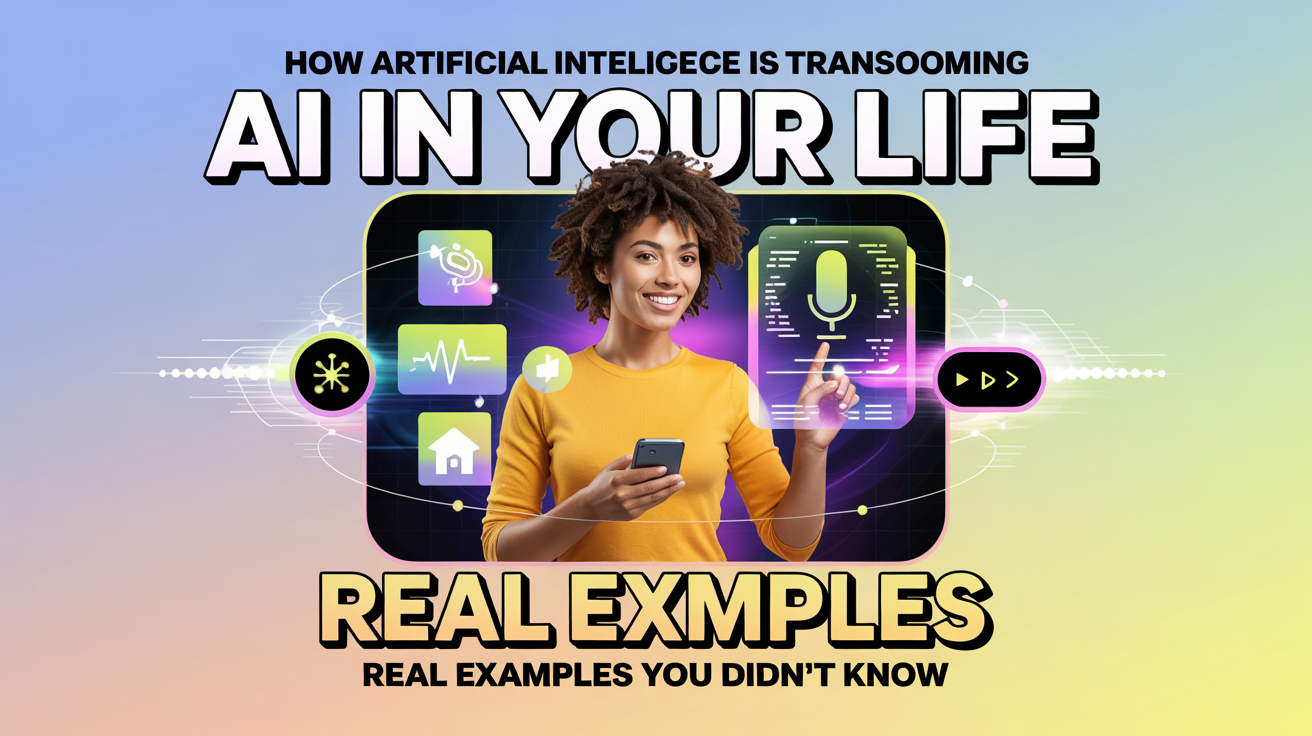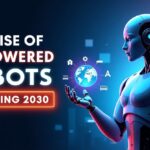Artificial intelligence has silently woven itself into the fabric of our daily routines, revolutionizing how we live, work, and interact with the world around us. From the moment we wake up to when we go to bed, AI-powered technologies are working behind the scenes, personalizing our experiences and automating tasks in ways that were once the realm of science fiction. While many of us recognize the obvious AI applications like voice assistants, the true extent of AI’s influence extends far beyond what most people realize, touching virtually every aspect of modern life.
The Invisible Revolution: AI in Personal Assistance and Communication
Voice Assistants: Our Ever-Present Digital Companions
AI-powered voice assistants have become ubiquitous in modern households. Siri, Google Assistant, and Amazon Alexa have evolved from novelty gadgets to essential tools that help us manage our daily lives. These intelligent assistants can perform a wide range of tasks, from setting reminders and sending messages to playing music and controlling smart home devices[1][2]. The natural language processing capabilities of these systems have advanced dramatically, allowing for more intuitive and human-like interactions.
Social Media Algorithms: Curating Our Digital Experience
Every time you scroll through social media feeds, AI algorithms are working tirelessly to analyze your preferences and behavior, curating content specifically tailored to your interests. Platforms like Instagram use AI to recommend posts based on your browsing history, while TikTok’s algorithm has mastered the art of keeping users engaged with highly personalized video recommendations[2]. These AI systems don’t just enhance user experience; they fundamentally shape how we discover and consume information online.
Fighting Misinformation and Harmful Content
Beyond content curation, AI plays a crucial role in maintaining safer online environments. Social media platforms like Meta employ sophisticated AI systems to detect and remove fake news, hate speech, and other harmful content[2]. These technologies analyze text, images, and patterns of behavior to identify potentially problematic content before it spreads widely, though the effectiveness of these systems remains a subject of ongoing debate and improvement.
AI in Healthcare: Revolutionizing Patient Care
Preventative Health: AI as Your Personal Health Coach
One of the most impactful applications of AI in healthcare is its ability to help people stay healthy through preventative measures. The rise of the Internet of Medical Things (IoMT) has created a booming market for consumer health applications that track everything from daily activity to specific health metrics[3]. Companies like Apple have integrated health monitoring features like cardiac health tracking and fall detection into mainstream consumer products, turning everyday devices into powerful health management tools.
According to research by Allied Market Research, the IoT healthcare market is projected to reach substantial growth, highlighting the increasing integration of AI into preventative healthcare solutions[3]. These technologies not only encourage healthy behaviors but can also detect potential health issues before they become serious, potentially saving lives through early intervention.
AI-Assisted Surgery: Precision Beyond Human Capability
AI is transforming surgical procedures, enhancing precision and reducing variation in outcomes. AI-controlled robotic systems provide three-dimensional magnification and can perform with greater precision than human hands alone, particularly for delicate procedures requiring miniaturization[3]. These systems can execute basic surgical tasks like cutting and suturing with remarkable accuracy.
In 2017, a significant milestone was reached when surgeons successfully used AI-assisted robotics for extremely delicate procedures[3]. This technology not only improves surgical outcomes but also reduces recovery time for patients and allows for less invasive approaches to complex operations.
Medical Imaging and Diagnostics: Seeing What Humans Might Miss
AI algorithms have demonstrated remarkable capabilities in analyzing medical images and supporting diagnoses. These systems can detect anomalies that might be overlooked by human eyes, particularly when processing thousands of images. From identifying potential cancers in radiology scans to detecting diabetic retinopathy from eye images, AI is becoming an invaluable assistant to healthcare professionals, enhancing diagnostic accuracy and speed[3].
AI in Finance: Reshaping Money Management
Fraud Detection: Invisible Protection for Your Money
Financial institutions have embraced AI as a powerful tool for detecting fraudulent activities. Systems like PayPal’s fraud detection algorithm use machine learning to monitor transactions in real time, analyzing numerous data points including user location, transaction history, and device information to identify potentially fraudulent behavior[4]. When suspicious activity is detected, these systems can automatically alert investigation teams or block transactions entirely.
The implementation of AI-powered fraud detection has significantly reduced the number of successful fraudulent transactions, making financial platforms more secure for users[4]. These systems continually learn and adapt to new fraud techniques, staying one step ahead of potential threats.
AI-Powered Customer Service: Financial Assistance 24/7
Financial institutions have increasingly turned to AI-powered chatbots to provide round-the-clock customer service. Mastercard’s chatbot “KAI” exemplifies this trend, assisting clients with account queries, transaction histories, and expenditure tracking across multiple communication channels including SMS, WhatsApp, and Messenger[4]. These AI assistants use natural language processing to understand customer questions and provide relevant, personalized responses.
This application of AI not only improves customer experience by offering immediate assistance regardless of time or day but also allows human customer service representatives to focus on more complex issues that require human judgment and empathy.
Algorithmic Trading: Making Market Decisions in Milliseconds
In the fast-paced world of financial markets, AI has become indispensable for analyzing market trends, identifying patterns, and predicting price movements[4]. AI-powered algorithmic trading systems can process vast amounts of data and execute trades at speeds impossible for human traders, identifying opportunities and risks in milliseconds.
These systems don’t just trade faster; they can identify subtle market patterns that might escape human analysis, potentially generating better returns while managing risk more effectively. As markets become increasingly complex and data-driven, AI’s role in financial decision-making continues to expand.
Smart Homes: AI at the Heart of Domestic Life
The Learning Home: AI That Adapts to Your Lifestyle
Modern smart homes have evolved far beyond simple automation schedules. AI-powered home systems analyze homeowners’ circumstances and preferences to independently control lighting, temperature, and household appliances[5]. These systems learn from your behavior patterns, automatically adjusting settings to optimize comfort, convenience, and energy efficiency.
For example, smart thermostats can learn when you typically arrive home and begin adjusting the temperature in advance, ensuring comfort while minimizing energy usage. Similarly, lighting systems can adapt to your daily routines, automatically creating the right ambiance for different times of day or activities.
Energy Efficiency Through Intelligence
One of the most significant benefits of AI in home automation is improved energy efficiency. Smart home systems can analyze patterns of energy usage, weather forecasts, and occupancy data to optimize heating, cooling, and electricity consumption[5]. These systems can make micro-adjustments throughout the day that, collectively, result in substantial energy savings without sacrificing comfort.
Additionally, AI can help homeowners understand their energy consumption patterns through intuitive interfaces and recommendations, empowering more conscious decisions about resource usage.
Enhanced Security and Peace of Mind
AI has dramatically transformed home security, moving beyond simple alarm systems to comprehensive, intelligent protection[1]. Modern AI-powered security systems can distinguish between normal activity and potential threats, reducing false alarms while providing more reliable protection. Facial recognition technology can identify family members versus strangers, while anomaly detection can alert homeowners to unusual patterns that might indicate a security concern.
These systems don’t just react to events; they proactively monitor for potential issues, providing homeowners with unprecedented peace of mind whether they’re at home or away.
AI in Retail and Shopping: Personalized Consumer Experiences
The Tailored Shopping Journey
Retailers are increasingly leveraging AI to provide highly personalized shopping experiences. By analyzing past purchases, browsing behavior, and demographic information, AI systems can recommend products that align with individual preferences and needs[1]. These recommendations aren’t limited to online shopping; brick-and-mortar retailers are also implementing AI-powered systems that can recognize returning customers and provide personalized service.
The result is a shopping experience that feels more relevant and convenient, with consumers discovering products they genuinely want or need rather than wading through irrelevant options.
Invisible Inventory Management
Behind the scenes, AI is revolutionizing how retailers manage inventory and supply chains. AI systems can predict demand patterns, optimize stock levels, and even anticipate supply chain disruptions[1]. These capabilities ensure that products are available when and where consumers want them, reducing both excess inventory and stockouts.
For consumers, this translates to better product availability and potentially lower prices as retailers operate more efficiently and reduce waste.
AI in Education and Workplace: Transforming How We Learn and Work
Personalized Learning Journeys
Education is being transformed by AI systems that can adapt to individual learning styles, paces, and interests. Intelligent tutoring systems can identify knowledge gaps and provide targeted lessons to address specific needs[1]. These systems can also recognize when a student is struggling with a concept and adjust the presentation or provide additional resources automatically.
This personalization has the potential to dramatically improve educational outcomes by ensuring that each student receives the right level of challenge and support rather than a one-size-fits-all approach.
Workplace Automation: Changing the Nature of Work
AI is reshaping the workplace by automating routine and time-consuming tasks, allowing employees to focus on more creative, strategic, and interpersonal aspects of their jobs[1][2]. From automated data entry and processing to AI-assisted content creation, many of the repetitive tasks that once consumed significant work hours are being handled by intelligent systems.
While this automation has raised concerns about job displacement, it’s also creating new opportunities for workers to develop skills that complement AI capabilities rather than compete with them. The most successful workers of the future will likely be those who can effectively collaborate with AI systems, leveraging their strengths while applying uniquely human skills like creativity, empathy, and ethical judgment.
The Future of AI in Everyday Life: What Comes Next
Emerging Technologies on the Horizon
As AI technology continues to advance, we can expect even deeper integration into everyday life. Autonomous vehicles are moving closer to mainstream adoption, promising to transform transportation and urban planning. AI-powered health monitoring is becoming more sophisticated, potentially allowing for earlier detection of health issues and more personalized treatment plans. Virtual and augmented reality, enhanced by AI, may fundamentally change how we interact with digital information and each other.
Navigating Ethical Considerations
The expanding role of AI in everyday life brings important ethical considerations that society must address. Questions about privacy, data security, algorithmic bias, and the appropriate boundaries for automation require thoughtful engagement from individuals, businesses, and policymakers[1]. As these technologies become more powerful and pervasive, establishing ethical frameworks and governance models becomes increasingly important.
Preparing for an AI-Integrated Future
For individuals, preparing for an increasingly AI-integrated future means developing adaptability and comfort with technological change. Cultivating skills that complement rather than compete with AI—such as critical thinking, creativity, emotional intelligence, and ethical reasoning—will become increasingly valuable. Understanding the basics of how AI systems work can also help people make informed decisions about which technologies to adopt and how to use them responsibly.
Conclusion: Embracing the AI Revolution
Artificial intelligence has moved beyond science fiction to become an integral part of everyday life, transforming everything from how we manage our homes to how we receive healthcare. The examples highlighted in this blog represent just the beginning of AI’s potential to enhance human capabilities and improve quality of life.
As we look to the future, the most successful approach will likely be neither uncritical enthusiasm nor reflexive resistance to AI, but rather thoughtful engagement that maximizes benefits while addressing legitimate concerns. By understanding how AI is changing everyday life and actively shaping its implementation, we can work toward a future where technology serves human flourishing rather than diminishing it.
The AI revolution is already here—not in the form of sentient robots, but in the countless ways intelligent systems are quietly enhancing our capabilities, personalizing our experiences, and solving problems in every domain of modern life. The question is not whether AI will transform society, but how we will direct that transformation to create the future we want to see.
How is AI transforming the way we interact with our homes
Artificial Intelligence (AI) is revolutionizing the way we interact with our homes by making them smarter, more personalized, and efficient. Here’s how:
1. Personalized Automation
AI enables smart home devices to learn user habits and preferences, creating customized experiences. For instance:
Smart thermostats adjust temperatures based on daily routines, saving energy when the house is empty and ensuring comfort upon return[1][3].
Lighting systems adapt to natural daylight or user preferences, creating ambiance while reducing electricity consumption[1][3].
2. Voice-Controlled Assistance
Voice assistants like Alexa, Siri, and Google Assistant have transformed home interaction. They allow users to control lighting, temperature, entertainment systems, and even security through simple voice commands[2][3]. Advanced natural language processing ensures these systems understand conversational instructions intuitively[1][3].
3. Enhanced Security
AI-driven security systems use facial recognition and anomaly detection to monitor unusual activity. These systems send real-time alerts to homeowners, ensuring safety without false alarms[1][3]. For example:
Cameras identify family members versus strangers.
AI monitors patterns to detect potential threats.
4. Context-Aware Systems
Future AI-powered homes will analyze routines, weather conditions, and habits to proactively adjust settings. For instance:
Opening blinds at sunrise.
Adjusting heating on rainy days for added comfort[1].
5. Health and Wellness Integration
AI is transforming bedrooms with smart mattresses and pillows that monitor sleep quality, body position, and health metrics. These devices adjust to individual needs for optimal rest[3]. Additionally:
Wearable devices integrate with smart fridges to recommend meals based on health data and available ingredients[4].
6. Centralized Control
Innovations like Aqara’s Home Copilot provide a centralized hub for managing all smart devices via natural language queries or proactive suggestions. This simplifies automation setup and enhances user experience[3].
7. Energy Efficiency
AI optimizes energy usage by analyzing consumption patterns and automating adjustments. Smart home systems reduce waste while maintaining comfort, appealing to eco-conscious homeowners[1][3].
8. Immersive Entertainment
AI-powered TVs and lighting systems create responsive environments tailored to entertainment needs, such as syncing lights with music or games for an immersive experience[3][4].
In summary, AI is transforming homes into intelligent ecosystems that adapt to our lifestyles, enhance convenience, and promote sustainability. As technology evolves, homes will become even more intuitive and responsive to individual needs.
How do AI-powered smart home devices learn our habits
AI-powered smart home devices learn our habits by utilizing advanced technologies like machine learning, data collection, and pattern recognition. Here’s how they achieve this:
1. Data Collection
Smart devices continuously gather data from user interactions and environmental sensors. For example:
Thermostats record temperature adjustments throughout the day.
Lighting systems monitor usage patterns, such as preferred brightness or timing.
Smart fridges track grocery purchases and consumption habits[2][5].
2. Machine Learning Algorithms
AI employs machine learning to analyze collected data and identify recurring patterns. Over time, devices adapt to these behaviors:
A thermostat might learn when you leave for work and automatically lower the temperature to save energy[2].
Robot vacuums like iRobot Roomba recognize dirtier areas (e.g., under dining tables) and schedule targeted cleaning after meals[3].
3. Predictive Modeling
AI uses predictive modeling to anticipate future actions based on past behavior. For instance:
Smart refrigerators can predict when you’re likely to run out of milk and add it to your shopping list automatically[2].
Security cameras equipped with facial recognition can distinguish regular visitors from strangers and adjust alerts accordingly[3][5].
4. Context Awareness
Some systems integrate contextual data, such as weather or time of day, to refine their responses. For example:
Smart lighting adjusts brightness based on natural daylight or evening routines[2][4].
Wearable devices sync with smart home systems to promote health, like adjusting room temperature for better sleep[4].
5. Voice and Natural Language Processing
Voice assistants like Alexa and Siri use natural language processing (NLP) to understand commands and adapt based on conversational patterns. Generative AI further enhances this by suggesting automations tailored to user preferences[1][5].
6. Edge Processing
Modern smart devices process AI workloads locally (on the device), enabling faster responses and reducing reliance on cloud computing. This allows real-time learning and personalization without compromising privacy[4].
Through these mechanisms, AI-powered smart home devices evolve into intuitive systems that proactively adapt to user needs, enhancing convenience, efficiency, and comfort in everyday living.




